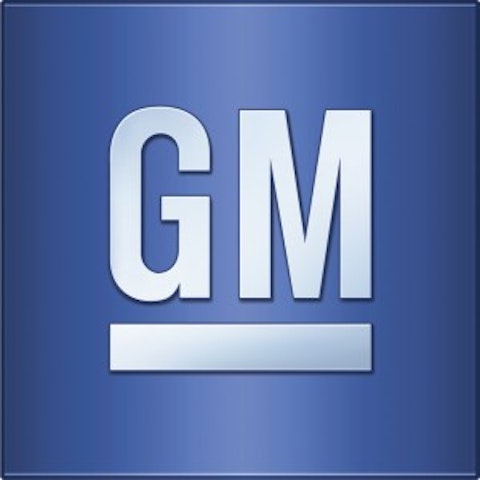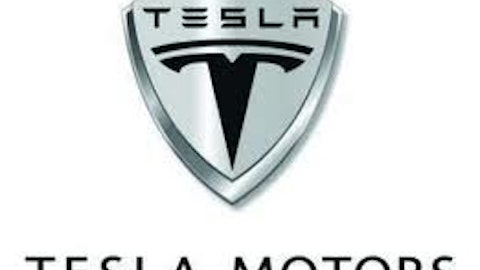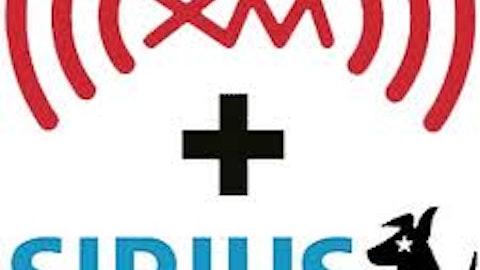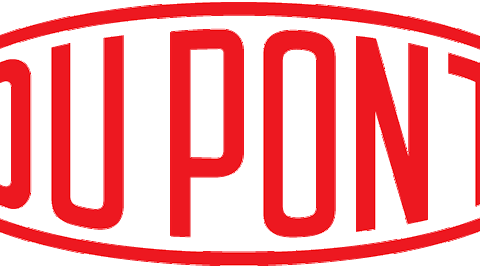It has been four years since the U.S. government bailed out General Motors Company (NYSE:GM) and Chrysler. For years, these two companies, along with Ford Motor Company (NYSE:F), had done everything wrong. They were building cars that consumers didn’t want, that were totally unreliable, and that were inferior in quality. Thus, they suffered from diminishing market share and low returns on invested capital until reality finally hit them in 2008. Ford Motor Company (NYSE:F) was only able to save itself from bankruptcy by borrowing $12.1 billion in long term debt at the height of the credit bubble.

One reason that American companies languished behind their foreign competitors was due to the perception that foreign brands — especially Japanese ones — were of higher quality and more reliable. This caused buyers to be willing to pay a higher price for say a Toyota over a Chevrolet. However, since re-emerging from bankruptcy in the summer of 2009, American car companies have been making somewhat of a comeback. General Motors Company (NYSE:GM) in particular has been ranking higher in quality and reliability surveys and has seen its luxury brand, Cadillac, return to its former glory. So can Detroit finally change a perception decades in the making?
The quality premium
The 10th chapter of Value: The Four Cornerstones, published in 2009 by management Consultancy Firm Mckinsey & Co. discusses the drivers of return on invested capital, or ROIC, and why different companies generate different ROIC from their businesses. One reason for different ROIC listed by the authors was quality — real or perceived. The authors discussed General Motors Company (NYSE:GM) and other American companies vs Toyota Motor Corporation (ADR) (NYSE:TM) and Honda Motor Co Ltd (ADR) (NYSE:HMC) as an example.
They argued that years of superior reliability and performance have entitled Japanese brands to a quality price premium. They observed that even if sticker prices on comparable vehicles from both groups were the same, American companies were forced on average to sell at $2000 -$3000 less than than their competitors, thus allowing Toyota Motor Corporation (ADR) (NYSE:TM) and Honda Motor Co Ltd (ADR) (NYSE:HMC) to earn higher returns on capital. This quality premium continued to linger around even as differences in quality diminished over time, proving that the perception of quality may far outlive the reality.
In the month of June, if we take a look at the average transaction prices of General Motors Company (NYSE:GM) and Ford Motor Company (NYSE:F) Vehicles versus Toyota Motor Corporation (ADR) (NYSE:TM) and Honda Motor Co Ltd (ADR) (NYSE:HMC), we find that even though the average transaction price of American brands are slightly higher, the incentives (cash rebates, lease promotions, cheap loans, and dealer incentives) they offer are almost double that of their Japanese competitors.
| Company | Average Transaction Price | Incentives | Incentive/ATP % |
| GM | $33,218 | $ 3,513 | 10.8% |
| Ford | $33,272 | $ 2,964 | 8.9% |
| Toyota | $29,177 | $ 1,660 | 5.7% |
| Honda | $27,165 | $ 1,690 | 6.2% |
| Industry Average | $31,125 | $ 2,537 | 8.2% |
Racing up the rankings
Last June, General Motors Company (NYSE:GM) overtook Toyota Motor Corporation (ADR) (NYSE:TM) in the JD Power Circuit for the first time since the survey began 27 years ago. GMC was the second highest scoring brand behind Porsche. Chevrolet came in 5th place ahead of Toyota Motor Corporation (ADR) (NYSE:TM) which placed 7th. All four of General Motors Company (NYSE:GM)’s brands ranked above average in the survey.
“If you were to ask me the question, what corporation has the best quality in the entire industry, the answer would be General Motors,” David Sargent, J.D. Power vice president of global vehicle research, said in a telephone interview with Bloomberg.
Ford Motor Company (NYSE:F), on the other hand, performed poorly in the survey, coming in at 27th out of 28. This can be mostly blamed on its MyFord Touch System, which has seen a high failure rate and sometimes required customers to return their cars to dealers for repairs. Ford Motor Company (NYSE:F) is expected to start rising in the rankings once it gets this technology sorted out. It’s Lincoln Luxury Brand came in at 17th scoring in the average range of vehicles.
The J.D. Power survey is an indicator of initial-built quality since it’s based on the number of problems reported per 100 vehicles in the first 90 days. The survey, however, tells nothing about how cars handle over time. This is where Japanese brands still reign supreme. Last year, in the Consumer Reports new-vehicle Reliability Index, Scion came in first place followed by Toyota Motor Corporation (ADR) (NYSE:TM) and Lexus, all brands of Toyota Motor Corporation (ADR) (NYSE:TM)’s. 7 out of the top 10 were Japanese. The top scoring American brand was GM’s Cadillac which came in 11th place moving up in ranking 14 places from last year.
Recalls, recalls, and more recalls
If reliability had been the Japanese brands’ strong point – recent high profile recalls certainly don’t help. Most notably, the Toyota 2009-2010 ‘Run-Away Vehicles’ scandal. You know a product recall was big if it has an entire Wikipedia page devoted to it. Nine million vehicles were recalled in 2009 and 2010 over allegations that they accelerated unintentionally due to a faulty vehicle design.
The recall and the alleged victim reports were heavily covered and scrutinized by US media; in fact, it was the number 2 most reported story in the beginning of February 2010. Some local Toyota dealerships even pulled ads from ABC stations in protest of what they perceived as excessive media coverage. The recalls have even been suspected of decreasing the resale value of used Toyota models.
That wasn’t the last of the trouble for the Japanese brands, earlier this year, 3.4 million Toyota, Honda Motor Co Ltd (ADR) (NYSE:HMC), and Nissan vehicles were recalled due to faulty airbags prone to catching fire or injuring passengers.
These recalls haven’t completely tarnished Toyota’s and other Japanese brands’ reputation for reliability; they are still viewed very favorably by many consumers. However, these events no doubt had a negative effect on the perception of these brands’ superiority over GM, Ford Motor Company (NYSE:F), and Chrysler that many consumers once had.
A high-end comeback
In 1998 Cadillac ended its six-decade reign as the number one luxury brand in the U.S. market. Due to downsizing in the 80s and 90s and a series of shoddy vehicle releases, such as the Cadillac Cimarron, GM saw its longtime luxury brand fall from grace and many of its loyal customers switch to the Beamers, Benzes, Acuras, and Lexuses of the world.
However, Cadillac made a strong comeback in the past two years with the release of the new ATS compact luxury sedan and the new mid-sized CTS luxury vehicle. Cadillac is currently the fastest growing major automotive brand in the U.S. The number of Cadillac vehicles sold between May 2012 and May 2013 increased by 38%, a growth rate not witnessed for the brand since 1976!
General Motors has become so confident with its new Cadillac line that it’s boosting the the 2014 CTS price by $6,000 over the current model up to $46,025. This puts the vehicle near the $50,000 price level that GM was shooting for with the CTS, thus distinguishing it from the ATS model, priced at $33,000, which is intended to be the new entry level car for the brand. This shows that Cadillac has become competitive against other entry-level and mid-level luxury vehicles from foreign brands such as Lexus, Acura, BMW and Mercedes Benz.
Conclusion
Over the past few decades Japanese car manufacturers have been able to earn higher returns on capital, partly due to the price premiums that they were able to extract from their reputation of superior reliability. With the recent performance of General Motors in quality ratings and its successful comeback with a legendary luxury brand, GM might be able to alter negative connotations to its brand in the minds of consumers over time which will allow it to increase prices and lower incentives thus increasing returns to shareholders.
The article Can American Cars Earn the Quality Premium? originally appeared on Fool.com and is written by Mohammed Shaaban.
Mohammed Shaaban has no position in any stocks mentioned. The Motley Fool recommends Ford and General Motors. The Motley Fool owns shares of Ford. Mohammed is a member of The Motley Fool Blog Network — entries represent the personal opinion of the blogger and are not formally edited.
Copyright © 1995 – 2013 The Motley Fool, LLC. All rights reserved. The Motley Fool has a disclosure policy.



